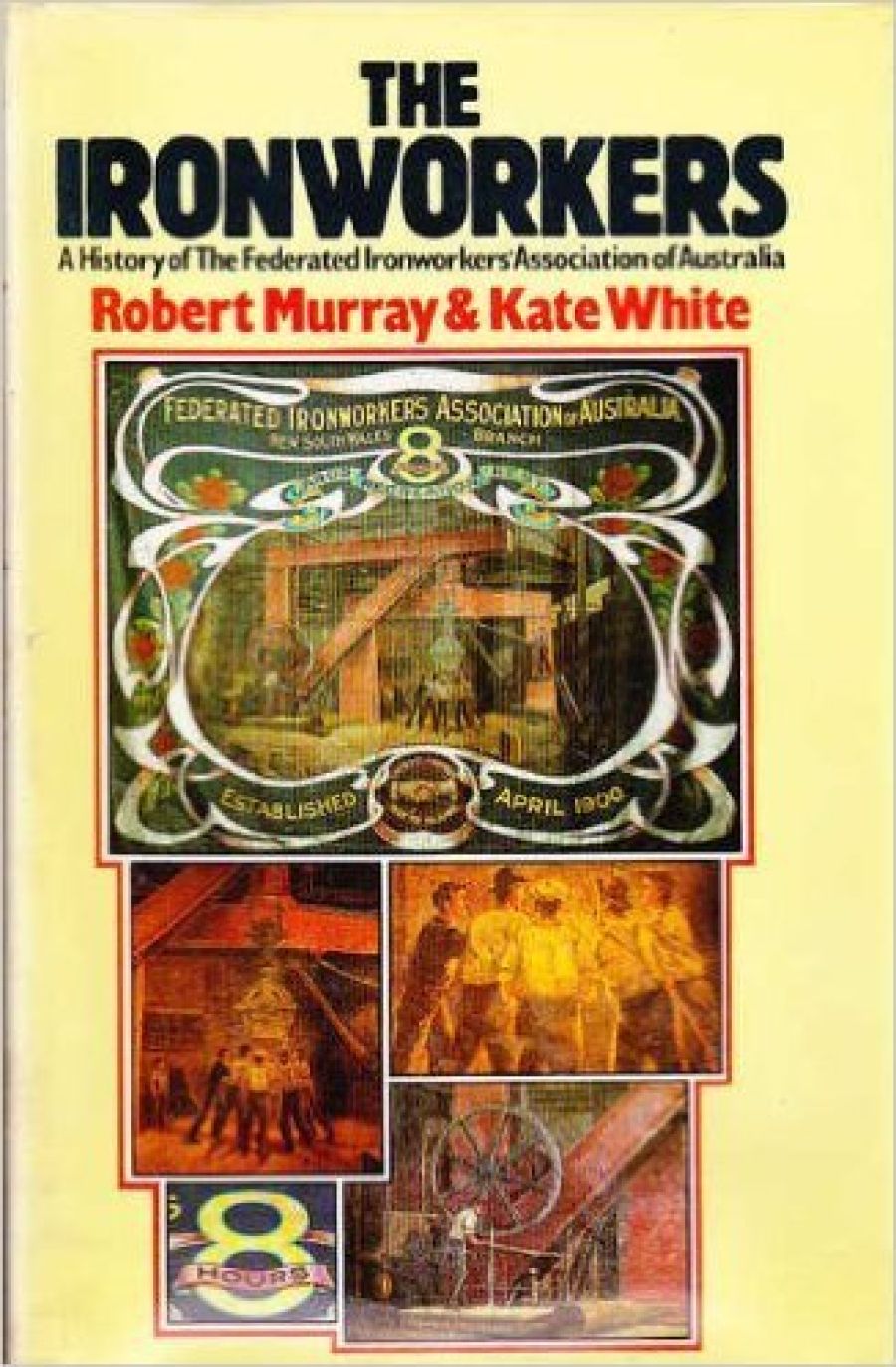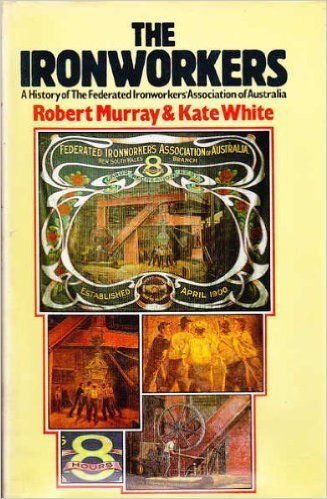
- Free Article: No
- Contents Category: Australian History
- Review Article: Yes
- Article Title: Struggles
- Online Only: No
- Custom Highlight Text:
The authors’ respective backgrounds gave them excellent qualifications to write this history of the FIA and the result is a book which should have much wider interest than its bland title suggests.
- Book 1 Title: The Ironworkers
- Book 1 Subtitle: A History of the Federated Ironworkers Association of Australia
- Book 1 Biblio: Hale & Iremonger, $11.95 pb, 341 pp
- Book 1 Cover Small (400 x 600):

- Book 1 Cover (800 x 1200):

Up to the time the book was commissioned (1981) the FIA had had only two full- time federal secretaries, each of whom was a powerful symbol of antagonistic forces in the trade union movement and wider spheres of labour politics. One was Ernest Thornton, who obtained the office in 1936, and the other was Laurie Short who held it from 1952 until his recent retirement. Thornton’s rise and fall mirrors the success and subsequent decline of Communist Party influence in Australia, a decline in which Short’s struggle to oust him from FIA leadership was a major factor. If Thornton’s reign at the FIA symbolised the height of communist influence in Australia, Short’s victory over him represented the greatest single triumph of the Industrial Groups. The FIA was not so much the battlefield as a key segment of a much wider front involving most of the labour movement.
Thornton was the epitome of a generation of energetic and able Communist Party trade union leaders( Jim Healy of the Waterside Workers and Jack Brown of the Victorian Railways Union were others) whose militancy and Marxism had been learned in the cruel economic climate of the 1930s. Electorally the Communist Party never counted with the Australian voters, but in trade union elections its men seemed invincible in the late 1930s and early 1940s, particularly alter the Red Army halted and then turned back the Nazis. At the peak of its influence in the industrial field, the Communist Party's men controlled at least a third of the Australian trade union movement, but possibly as much as half, in terms of members represented.
The FIA, with its numbers swollen by war-time industries, including the munition workers, was the Communist Party's biggest bastion, with its Labor News, and two 'Ironworkers Sessions’ on NSW commercial radio spreading the party line, and with the FIA building in George St., Sydney, providing facilities for a host of auxiliary party activities.
Equally, the ousting of Thornton and his comrades from the FIA can be seen as the greatest victory of the Industrial Groups, dedicated to the destruction of communist influence in the unions, although there were others too who helped. A group of Trotskyists in the union's Balmain branch had battled Thornton through the years when his star was rising invincibly. Laurie Short was one of them for a time, having previously been an orthodox communist like Thornton.
The Thornton era ended when, after a marathon hearing, Mr Justice Dunphy decided that there had been ‘forgery, fraud and irregularity on a grand scale’ in the 1949 FIA election and that Thornton had been the beneficiary of these malpractices. Thornion, by the time the case started, had moved to a position in Peking with an organization giving moral and other support to legal and illegal communist parties in Asia. Short was declared national secretary and moved into Thornton's office, uncomfortably at first, as the other FIA officials and staff, even to the lift-driver, were communist or pro-Thornton.
After those turbulent years the FIA sailed in more placid waters. Its achievements in winning pensions, pay increases, bonuses, improved injury compensatio
n and other gains for its members are noted, although briefly. Not unnaturally, the authors have rightly devoted most of their account to the more colourful period of fisticuffs and political warfare, ballot-rigging and bashings. ‘Vice is news, virtue isn’t’ applies to history too.
The book is amply illustrated with photographs of individuals and events in the FIA’s history. One shows workers’ homes in Port Kembia in the 1930s where ‘canvas, not glass, covered the windows’. As late as 1936 many ironworkers were living in shanty towns or camps adjacent to the plants which employed them. There are also many reproductions of cartoons which perhaps even more effectively evoke the feelings and attitudes of FIA protagonists throughout the 1930s and later.


Comments powered by CComment